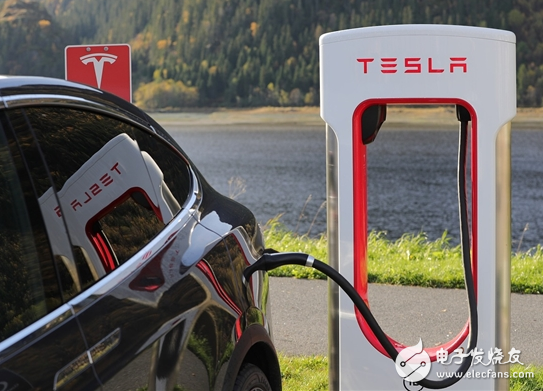For electric car owners, while enjoying the advantages of electric cars such as quietness, power, and cost-saving, they also have to endure the trouble of inconvenient charging. Especially in extreme weather conditions in winter and summer, waiting for an hour or two to charge outdoors is a painful thought.

The inconvenience of charging and the long charging time have become the primary factors restricting the large-scale market promotion of electric vehicles. Compared with the convenience of fuel vehicles that can be refueled and driven, electric vehicles can only look at the gas gun and sigh.
However, this situation is about to change. According to domestic media reports, Tesla recently launched a V3 supercharger charger, which can charge to increase the range of 120 kilometers in 5 minutes. Compared with the previous charging efficiency, it has increased by 50%. The V3 supercharger charger can further shorten the charging time and greatly improve the owner's car experience satisfaction.
Tesla currently has 12,000 charger networks in North America, Europe and Asia, and the number will continue to grow. In China, where new energy vehicles were first promoted, the charging network coverage rate has already exceeded 90%. It is reported that Tesla will use V3 superchargers to gradually replace the old charging system. By then, Tesla's charging network will be able to provide car owners with faster charging services.
According to Tesla's official website, the V3 electronic supercharger enables every car owner to charge at maximum power. There is no need to worry about other car owners taking away the output power of the charging pile. This means that when charging in the V3 electronic supercharger charging pile, the charging time of Tesla's current models on sale will be shortened to about 15 minutes, which is not much different from the refueling speed of fuel vehicles.
However, this is not the only measure Tesla has taken to speed up charging. It is reported that Tesla will upgrade a new battery thermal management system to the car computer through OTA in the near future. When the user navigates to the charging station to charge, Tesla will detect the user's charging intention and automatically heat the battery when it is about to reach the charging location to maximize the charging efficiency of the vehicle. It is reported that this technology can reduce the average charging time of car owners by 25%.
Tesla has continuously made improvements in both software and hardware to reduce the charging time of car owners and improve their car satisfaction. It has to be said that Tesla has made a lot of real achievements in the field of electric vehicles, which has greatly improved consumers' acceptance of electric vehicles. It is no wonder that users only buy Tesla electric vehicles.
Previous article:Genetec Launches New Automatic License Plate Recognition System Using Intel Deep Learning Vision Processing Unit
Next article:Miniaturization and high power are still the main trends of resistors in the automotive and industrial markets
- Popular Resources
- Popular amplifiers
- 2024 China Automotive Charging and Battery Swapping Ecosystem Conference held in Taiyuan
- State-owned enterprises team up to invest in solid-state battery giant
- The evolution of electronic and electrical architecture is accelerating
- The first! National Automotive Chip Quality Inspection Center established
- BYD releases self-developed automotive chip using 4nm process, with a running score of up to 1.15 million
- GEODNET launches GEO-PULSE, a car GPS navigation device
- Should Chinese car companies develop their own high-computing chips?
- Infineon and Siemens combine embedded automotive software platform with microcontrollers to provide the necessary functions for next-generation SDVs
- Continental launches invisible biometric sensor display to monitor passengers' vital signs
- Intel promotes AI with multi-dimensional efforts in technology, application, and ecology
- ChinaJoy Qualcomm Snapdragon Theme Pavilion takes you to experience the new changes in digital entertainment in the 5G era
- Infineon's latest generation IGBT technology platform enables precise control of speed and position
- Two test methods for LED lighting life
- Don't Let Lightning Induced Surges Scare You
- Application of brushless motor controller ML4425/4426
- Easy identification of LED power supply quality
- World's first integrated photovoltaic solar system completed in Israel
- Sliding window mean filter for avr microcontroller AD conversion
- What does call mean in the detailed explanation of ABB robot programming instructions?
- STMicroelectronics discloses its 2027-2028 financial model and path to achieve its 2030 goals
- 2024 China Automotive Charging and Battery Swapping Ecosystem Conference held in Taiyuan
- State-owned enterprises team up to invest in solid-state battery giant
- The evolution of electronic and electrical architecture is accelerating
- The first! National Automotive Chip Quality Inspection Center established
- BYD releases self-developed automotive chip using 4nm process, with a running score of up to 1.15 million
- GEODNET launches GEO-PULSE, a car GPS navigation device
- Should Chinese car companies develop their own high-computing chips?
- Infineon and Siemens combine embedded automotive software platform with microcontrollers to provide the necessary functions for next-generation SDVs
- Continental launches invisible biometric sensor display to monitor passengers' vital signs
- NXP Smart Car Northeast Competition First Prize, we will open source after the competition
- Non-inverting proportional amplifier feedback resistor setting
- I encountered a problem about Keil today
- Cumulative error analysis and clock frequency optimization for UART communication in MSP430FR2311
- [Shanghai Hangxin ACM32F070 development board + touch function evaluation board] Voltage meter implementation and ADC performance rough test
- Xianji official engineer dry goods: Based on HPM6750 CAN2.0 and CAN-FD operation guide
- Saber simulation problem
- Operational Amplifier User Manual
- Characteristics and Functions of Flexible Circuits
- My 4-year-old daughter made a robotic arm in the latest learning power course

 PA42
PA42















 京公网安备 11010802033920号
京公网安备 11010802033920号